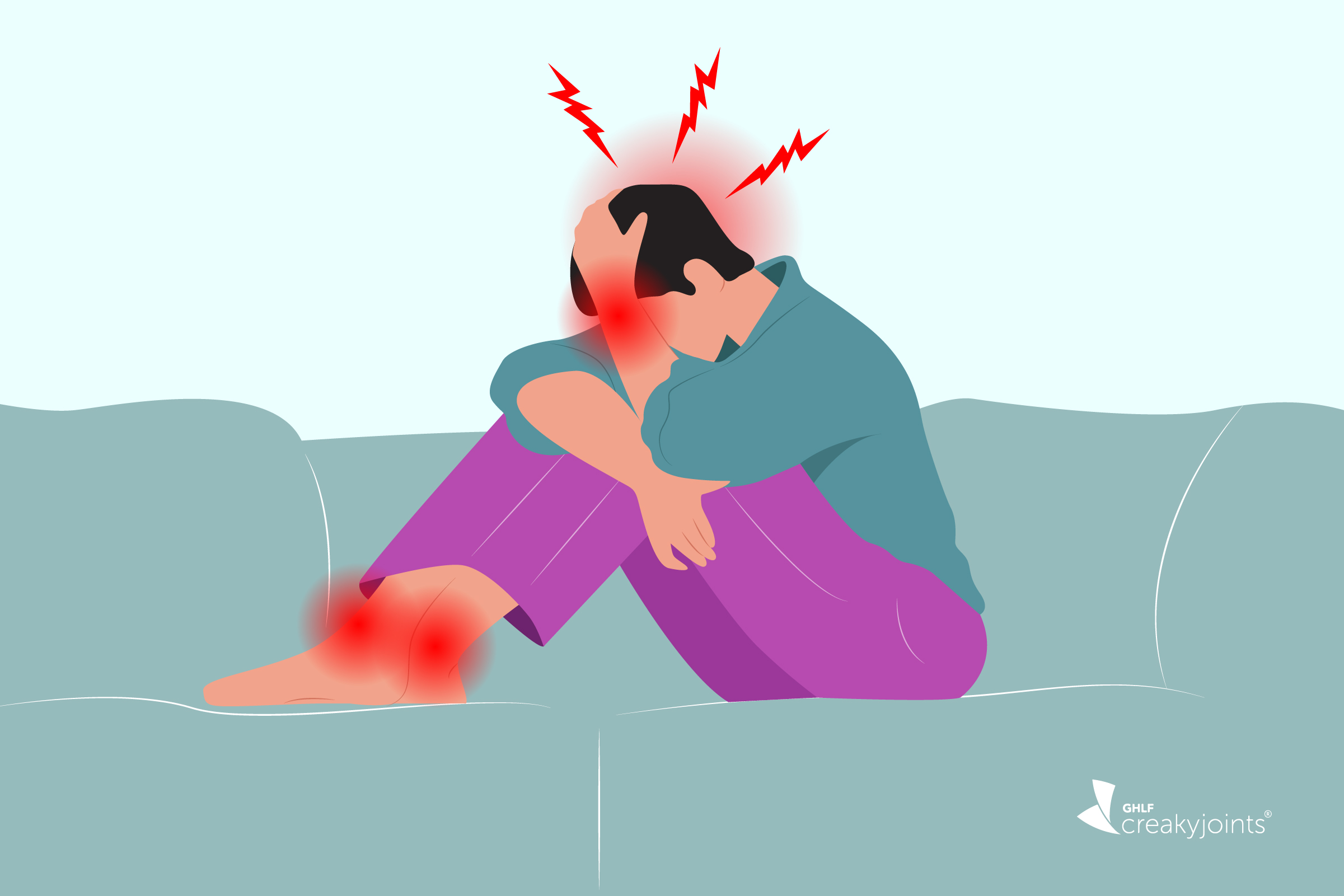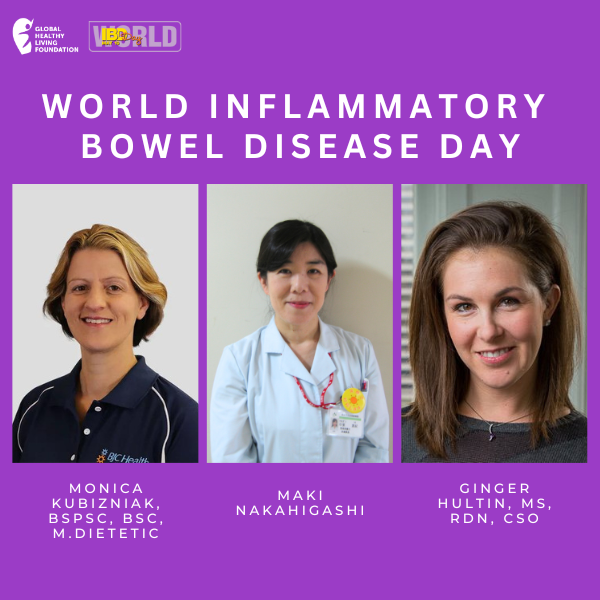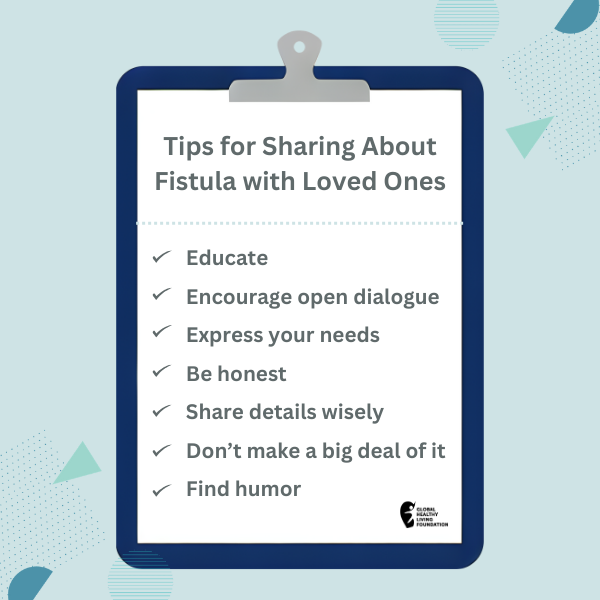In honor of World IBD Day, dietitians from three different continents share tips on managing diet and inflammatory bowel disease (IBD).
Own Your Crohn’s: Tina’s Journey with Fistulizing Crohn’s Disease
Own Your Crohn’s: Tina’s Journey with Fistulizing Crohn’s Disease
“I was a totally different person before [experiencing fistulizing Crohn’s]. It taught me meaning and purpose. It gave me the desire to move the needle on how people are treated in the health care system.”
April 3, 2024
Nina Wasserman

Check out Your Guide to Understanding Complex Perianal Fistula for more information on this topic.
Tina Aswani-Omprakash’s 18-year journey with fistulizing Crohn’s disease has had many twists and turns. After being misdiagnosed and experiencing frustration with treatments that just did not work, Tina went on to endure more than 20 surgeries, six fistulas — including one that almost left her paralyzed — as well as sepsis, unbelievable pain, and cultural stigma.
She is not only a survivor but an inspiring example to many. Tina has learned to “own her Crohn’s” and has made a positive impact on the world through her patient advocacy and outspoken support for people dealing with Crohn’s and the complications of fistula.
The Wrong Diagnosis
In 2006, Tina was diagnosed with mild ulcerative colitis. Within a couple of years, it progressed to acute severe UC. “None of the treatments were helping,” recalls Tina, who had to undergo surgery to remove her colon and most of her rectum.
Following the procedure, a J-pouch was constructed out of her small intestine through which she could pass stool. However, later she discovered she had Crohn’s disease. J-pouches aren’t recommended for individuals with Crohn’s because they are made of the small intestine and Crohn’s can attack the small intestine unlike in ulcerative colitis.
At her friend’s wedding over Thanksgiving weekend in 2010, everything reached a breaking point for Tina. She already felt disconnected from her high school friends, and the nearly 40-pound weight gain from the prednisone used to treat her supposed IBD only exacerbated her discomfort. “I had to borrow a large-sized lehnga for the wedding,” she recalls.
Then, amidst the celebration, she felt an abscess, which she later found out was her first rectovaginal fistula that broke through. “I had no idea what was happening,” she says. “I had a fever. I was vomiting. I became frantic. I was in the bathroom and was just freaking out.”
For Tina, who was married 16 months earlier, this sudden revolt in her body did not make any sense. “I was told before my colectomy surgery that the J-pouch would be a cure, but it wasn’t. I was told this was a possible case of Crohn’s disease and that I would need surgical intervention.”
Confused and Without Answers
That weekend doctors put in a seton, which is a thin, rubber surgical thread that runs through the tract of the fistula to keep it open so it can drain. “I woke up from surgery with this band-like thing down there and I had no idea what it was for, how long I would have it, and if it would be removed eventually,” says Tina. “What physical activities could I do — what wasn’t I able to do? Would it affect intercourse? When was it going to come out? There was no plan for me; no advice. And it totally impacted my life.”
Tina vividly remembers the frustration she felt after facing unanswered question after unanswered question: “You feel violated by your body that it is creating holes in your genitalia. You feel bewildered. I had fecal drainage, mucus, and blood coming from a hole in my private parts.” Plus, because of the bacteria from the drainage, Tina had non-stop urinary tract infections.
Five months later Tina was back in the emergency room with more complications: the pouchitis (inflammation in the lining of the J-pouch) had flared up and she was experiencing incontinence.
Taking Control of Her Health
Tina’s life felt out of control. She developed four more fistulas, had pain both urinating and passing stool, and the UTIs were causing constant peeing as well as stinging and burning.
Tina decided it was time to step up and advocate for herself. “I had to become a partner in my own care,” she says. She sought second opinions and went on a mission to save her J-pouch. To educate herself, she read what little research was available at the time and became an expert in her condition — so much so that she was often asked by doctors if she was a doctor. “I needed to get this under control,” she says. “I wanted my life back and I wanted to save my marriage.”
Treatment began with biologics. But the biologic — which she had been on before her colectomy — caused an unexpected allergic reaction and she went into anaphylactic shock. Tina went on to do more research, advocate for better treatment options, and tried two more biologics. Unfortunately, her condition did not improve.
Facing the Stigma of Ostomy
In 2014, with two more fistulae forming, Tina had to face what she was hoping to avoid: a permanent ostomy. The stigma of an ostomy runs very deep in many communities and especially so in South Asian culture, says Tina, noting that her father who had Crohn’s refused an ostomy for 14 years. He developed colorectal cancer due to Crohn’s that wasn’t well-controlled and passed away at age 39. People with Crohn’s disease involving the colon have a greater risk for developing colorectal cancer than the general population.
Elders within Tina’s family had pushed hard for her to not have the ostomy. But Tina saw it as the only option. Her J-pouch removal and permanent ostomy came with complications. Pieces of the J-pouch had been left behind and Tina had to endure seven corrective surgeries to properly excise the pouch. She developed a large abscess in her pelvis. Sepsis resulted from the abscess and there was a fistula tunneling from the abscess that was headed toward her spine. She was told it may cause her to become paralyzed.
After a long hospital stay and multiple surgeries to remove the massive pelvic abscess, doctors found a new rectovaginal fistula on an MRI after Tina develop UTI symptoms again. Tina was devastated but pushed harder for a treatment that would bring relief.
Soon after, she was approved to begin a clinical trial for a new biologic that she prayed would work. After several months, her last fistula closed. In 2016, she was in remission for the first time in 10 years.
“Coming Out” to Advocate for Those with Fistulizing Crohn’s
In 2018, Tina came out publicly about her disease on her blog entitled Own Your Crohn’s. In her blog post, titled “Real Talk About Fistulae,” she wrote: “The thing people often don’t realize is that fistulae violate our beings right at the seat of our womanhood, threatening our basic identity as human beings. And that, in and of itself, is paralyzing.”
Tina describes coming out about her Crohn’s and her fistulas as “social suicide,” but nonetheless vital to her own journey and mission. She wanted others to own their Crohn’s, too, and ease the significant social and cultural burden for those suffering from IBD.
Luckily, it’s a different landscape today than it was 18 years ago when Tina first faced Crohn’s. It is now a more hopeful world, Tina says, noting that there are new medicines coming out and more research for stem cell therapy and other surgical options for fistula.
Still, Crohn’s can be very difficult to deal with — and even more so if you’re alone. Tina was fortunate to have support from both her mother and husband, who kept her going when she felt her “life was useless” and like she “was a frequent flier” on the colorectal surgery floor of her hospital. “My mother took care of me — day and night — and my husband stuck around when our culture and community told him you can do better,” she says.
Tina has been married for nearly 14 years now and is grateful for her husband’s physical and emotional support throughout her journey.
Life in Remission
Tina’s experience with fistulizing Crohn’s has completely changed her life — “it changed every ounce of my being,” she says. “I was a totally different person before. It taught me meaning and purpose. It gave me the desire to move the needle on how people are treated in the health care system.”
Tina has been on the same biologic for nine years. Although there have been a lot of ups and downs, she is doing better, despite physical limitations. Her rectum and anus have been removed and sewn up permanently, so she passes stool solely through her stoma into an ostomy bag. This is often referred to as a “Barbie butt” for women and “Ken butt” for men. In addition, her multiple surgeries and disease flare-ups have led to pelvic floor dysfunction and chronic pain, which she manages through pelvic floor physical therapy and acupuncture, respectively.
Beyond the physical challenges she’s faced, Tina’s journey has brought about significant personal changes. Transitioning from Wall Street to earning a master’s degree in public health, she now plays dual roles working in health care market research and serving as a leading patient advocate.
Motivated by her own struggles and her father’s, Tina is committed to improving treatment experiences for others. Alongside fellow advocates and health care professionals, she co-founded the non-profit organization South Asian IBD Alliance, which aims to address cultural stigma and advocate for individuals with IBD.
Tina’s Advice for Those with Crohn’s
If you are newly diagnosed with Crohn’s disease, Tina has the following advice:
- Read and get informed — but not just by Google searches. Read research publications and articles from credible advocates, she says.
- Push for shared decision-making. “Know your options and advocate for open conversation about your symptoms,” she says. “Make sure there is a plan in place for you.”
- Seek a doctor who is open to opinions from other specialists. Tina has had to switch her doctor multiple times in search for the best treatment. She adds that seeking multidisciplinary care is also a crucial part of the treatment. This includes mental health therapy, dietitian support, colorectal surgery opinion(s), and complex gynecological support (for women). And if you present with one or more fistula, it’s very important to see a gastroenterologist to rule out Crohn’s disease.
- Own your Crohn’s. “It’s really important for patients to own their disease and to be able to thrive,” Tina says. “And we hope to see research reshape a better future for us as patients.”
Gut Culture Podcast
Check out Gut Culture, a podcast that gut checks assumptions about IBD (Inflammatory Bowel Disease) through real conversations with two health care leaders. Listen now.
This article was made possible with support from Takeda.
Source:
SUBSCRIBE TO GHLF
RELATED POST AND PAGES
_
Was this article helpful?
YesNo







